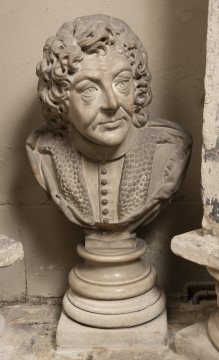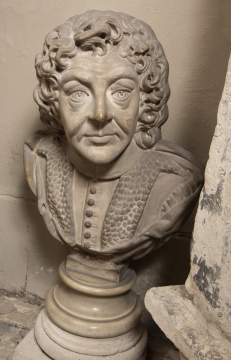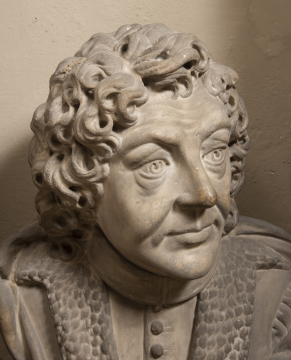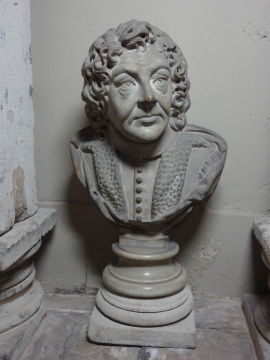Explore Collections


You are here:
CollectionsOnline
/
Bust of John James Heidegger, master of the revels to King George II
Browse
SM M444. ©Sir John Soane's Museum, London. Photo: Art UK
Bust of John James Heidegger, master of the revels to King George II
Marble
Height: 86cm
Width: 43cm
Depth: 28cm
Width: 43cm
Depth: 28cm
Museum number: M444
On display: Basement West Corridor
All spaces are in No. 13 Lincoln's Inn Fields unless identified as in No. 12, Soane's first house.
For tours https://www.soane.org/your-visit
Curatorial note
Johann Jakob (anglicised as John James) Heidegger (1666–1749), was an impressario born in Switzerland. His Dictionary of National Biography entry reveals that little is known of his early life except that he abandoned his wife and family to move to England where, by 1707, he was involved in introducing Italian opera to London. Later he was closely associated with Handel and worked in opera as an adapter, translator and manager. He was also responsible for masquerades (popular upper-class entertainments) in the capital from about 1715/16 until the 1730s and became a great celebrity. He was employed to organise many public celebrations including the October 1727 illumination of Westminster Hall for the coronation of George II, which may explain Soane's reference to him as 'master of the revels' to the King.
He was renowned for his distinctive appearance and seems to have made a joke of his ugliness, which was satirised by, amongst others, William Hogarth. There are a number of drawings and engravings which confirm that this bust is indeed of him but none relates directly to this sculpture. Its flat back may indicate that it either comes from or was intended for a wall monument. Heidegger died in Richmond (where he lived at 4 Maids of Honour Row) in 1749. There is no record in the Gunnis Dictionary of British Sculptors of any portrait bust being made of him and the sculptor of this work remains unknown.
He was renowned for his distinctive appearance and seems to have made a joke of his ugliness, which was satirised by, amongst others, William Hogarth. There are a number of drawings and engravings which confirm that this bust is indeed of him but none relates directly to this sculpture. Its flat back may indicate that it either comes from or was intended for a wall monument. Heidegger died in Richmond (where he lived at 4 Maids of Honour Row) in 1749. There is no record in the Gunnis Dictionary of British Sculptors of any portrait bust being made of him and the sculptor of this work remains unknown.
Soane collections online is being continually updated. If you wish to find out more or if you have any further information about this object please contact us: worksofart@soane.org.uk












